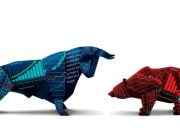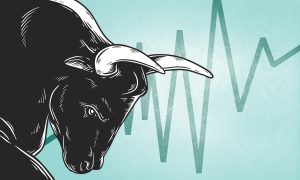Stocks sank this morning as social unrest in China intensified. Demonstrations broke out this weekend in mainland China as citizens reacted to tightening government health restrictions. A resurgence of infections in China may exacerbate supply chain disruptions and global market headwinds.
Today we’ll discuss a short-term play that allows shareholders to benefit from backslides in the market. This valuable tactic can be used as a hedge and also to generate quick profit when things take a turn. Unlike short-selling, the risk associated with this tactic is limited, in theory making it a better option.
Traders who are looking to benefit from sliding stocks often turn to short-selling. The main risk of traditional short-selling is that while profit is capped (a stock can only fall to zero), the risk is theoretically unlimited. Of course, other tactics can be used to cover a position at any time, but with a short-selling position, investors risk receiving margin calls on their trading account if their short position moves against them.
Inverse or “short” ETFs are another option that allows you to profit when a particular investment class declines in value. Some investors use inverse ETFs to profit from market declines, while others use them to hedge their portfolios against falling prices.
Over short periods, you can expect that the inverse ETF will perform “the opposite” of the index over short periods, but a disconnect may develop over more extended periods. Inverse ETFs will decline as an asset appreciates over time. For that reason, inverse ETFs typically are not seen as suitable long-term investments. Furthermore, frequent trading often leads to an increase in fund expenses, and some inverse ETFs have expense ratios of 1% or more.
Inverse ETFs can be excellent day-trading candidates and highly effective short-term hedging tools when approached correctly. There are several inverse ETFs that can be used to profit from declines in broad market indexes, such as the Russell 2000 or the Nasdaq 100. Also, there are inverse ETFs that focus on specific sectors, such as financials, energy, or consumer staples.
With $3 billion in assets, the ProShares Short S&P 500 (SH) is the largest inverse fund by value. Commonly used by investors as a hedging vehicle, the fund strives to deliver the inverse performance of the S&P 500 (SPX). If you’re concerned about the stock market falling, this fund that moves in the opposite direction of the largest 500 U.S. corporations is the simplest way to protect yourself.
It’s important to note that SH is designed to deliver inverse results over a single trading session, with exposure resetting every month. Investors considering this ETF should understand how that nuance impacts the risk/return profile and realize the potential for “return erosion” in volatile markets. SH should not be found in a long-term, buy-and-hold portfolio. The fund comes along with an expense ratio of 0.9%.
You might also like:
- A.I. Gamechanger Says “$2.50 Stock Set to Breakout Overnight”
- Mysterious Gold Leverage Just Announced
- Elon’s New A.I. Device is About to Shock the World
- Prepare Now Before This Looming $2 Trillion D.C. Shock
- Buy Elon Musk’s New $1 Play before June 30
- Write this ticker symbol down…
- The Crypto Melt-Up has Begun
- “A.I. is a Tidal Wave” – Here’s What to Buy
- Beware Executive Order 14067
- #1 AI Stock for 2024 and Beyond





















